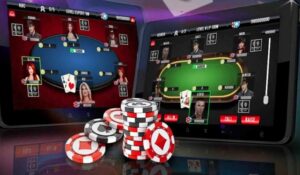Bluffing is a crucial strategy in online poker that can help you win pots even when you don’t have the best hand. However, bluffing requires careful consideration and timing to be successful. Here are some tips to help you master the art of bluffing in online poker:

Master the Art of Bluffing in Online Poker
- Understand Your Opponents: Bluffing is most effective when you have a good read on your opponents’ playing styles and tendencies. Observe their betting patterns, hand selection, and previous actions to identify players who are more likely to fold to a bluff. Bluffing against tight, cautious players is generally more successful than bluffing against loose, aggressive opponents.
- Table Image: Your table image plays a crucial role in the success of your bluffs. If you have been playing tight and only showing strong hands, opponents are more likely to give you credit for having a good hand when you bluff. On the other hand, if you have been playing aggressively and showing bluffs, it can be harder to get away with a successful bluff. Adjust your bluffing frequency based on your table image.
- Board Texture: The texture of the community cards should influence your bluffing decisions. Bluffing on coordinated or scary boards (e.g., flush draws, straight possibilities) requires more careful consideration since there are more hands that your opponents could potentially call with. Bluffing on dry boards with no significant draws gives you a better chance of success.
- Position Matters: Bluffing from late position (such as the button or cutoff) gives you an advantage since you have more information about your opponents’ actions. Bluffing out of position is riskier as you are more vulnerable to being called or raised without knowing your opponents’ intentions.
- Sizing Your Bets: Proper bet sizing is crucial for bluffing. Your bet should be large enough to make it unprofitable for opponents to continue with weak hands, but not so large that it becomes an easily detectable bluff. Bet sizing that is consistent with your previous bets and hand strength helps maintain your credibility at the table.
- Timing and Board Reading: Pay attention to the board dynamics and the story it tells. Bluffing is more effective when the community cards appear unfavorable to your opponents’ likely holdings. Reading the board and considering the range of hands that your opponents may have can help you make more accurate bluffing decisions.
- Combining Bluffs with Semi-Bluffs: A semi-bluff involves making a bet or raise with a drawing hand that has the potential to improve on future streets. Combining bluffs and semi-bluffs in your strategy can add complexity and unpredictability to your play, making it harder for opponents to put you on a specific hand.
- Avoid Over-Bluffing: While bluffing is a valuable tool, it’s important not to overdo it. Bluffing too frequently can be easily detected by observant opponents, leading to them calling you down more often. Bluff selectively and choose your spots wisely.
Remember, successful bluffing requires practice, observation, and adjusting to the dynamics of each poker table. It’s important to balance your bluffing frequencies, play selectively, and always be mindful of your opponents’ tendencies. With experience and practice, you can become a skilled bluffer in online poker.
